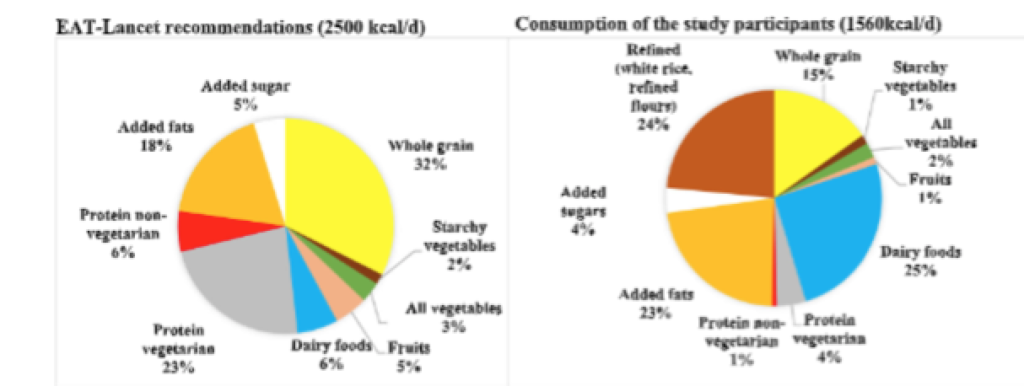Indians consume more dairy than healthier fruits and vegetables, according to a recent study that expressed concern over the low nutrient intake and called for a public health campaign to correct the anomaly.
The study claimed that rural and poor women were adversely affected by this gap.
The study, “Dietary Patterns in North and South India: a comparison with EAT-Lancet Dietary Recommendations,” was published in the Journal of Human Nutrition and Dietetics. According to EAT-Lancet guidelines, wholegrain (32 per cent) and protein vegetables (23 per cent) should form a significant chunk of food intake. Dairy foods should be only five per cent.
But the study showed that Indians consumed 25 per cent dairy foods, 23 per cent added fats, only 15 per cent whole grains, and four per cent protein vegetarian.
“The diets of the study participants were mainly plant-based and high in dairy but lacking in nutrient-rich foods such as vegetables and fruits,” said the study.
The findings are based on a survey of 8,762 adults in Sonipat in Haryana and Vizag in Andhra Pradesh 2019. Half of the participants in the study were women and rural.

“Vegetables and fruits were consumed in lower quantities, whereas dairy and added fats were consumed in higher quantities than recommended by the EAT‐Lancet recommendations,” the study said.
The study found that when compared by urban and rural residents, the consumption of starchy vegetables, all vegetables, fruits and protein‐rich foods was higher in urban areas. However, in rural areas, the consumption of whole grains and dairy products was higher.
The consumption of various foods was also different among men and women. While women consumed starchy vegetables, which includes potatoes, corn, peas, and lentils, and all vegetables, men took more non‐vegetarian protein.
Similarly, the difference between poor and rich varied too. The rich ate more vegetables, fruits, and dairy items, the study found.
The study also found that whole grains, all vegetables, fruits, dairy, and added fats consumption were higher in Vizag than in Sonipat, while the mean quantity consumed of starchy vegetables and added sugars was higher in Sonipat than in Vizag.
Speaking with this paper, Prof Sailesh Mohan, one of the authors of the study, “Compared to the EAT-Lancet recommendations, the study participants were consuming inadequate amounts of nutrient‐rich fruits and vegetables which are very beneficial to health, but consuming more dairy, refined foods (white rice, flours), fats and sugars, which adversely impact health.”
“Given the high burden of malnutrition and cardiometabolic diseases in India, this is very disconcerting from a population health perspective,” he said.
“We need policy actions for making micronutrient-rich foods and healthy sustainable diets available and affordable to all, with a particular focus on the poor and rural populations,” said Mohan, who is a Professor at the Public Health Foundation of India (PHFI) and Director, Centre for Chronic Conditions and Injuries (CCCI).
Mohan added that from a planetary health and sustainability perspective, it is reassuring that consumption of high carbon footprint foods such as red meats, and other non‐vegetarian foods, is not a major issue.
“However, a shift towards higher dairy consumption can lead to a high carbon footprint from Indian diets in the future and needs to be borne in mind, while framing dietary and agricultural policies, to make food systems more resilient, responsive to population dietary needs and sustainable,” he added.
It has recommended policies to make healthy, sustainable diets and micronutrient-rich foods affordable.
It called for implementing EAT-Lancet recommendations on a healthy diet by the Indian Council of Medical Research (ICMR).
EAT-Lancet guidelines, developed by the Lancet Commission on Planetary Health in 2019, recommend 2500 kcal/d (kilo calorie per day), whereas Indians consumed only 1560 kcal/d. Calories are a measure of energy in nutrition.
Source : The new Indian express Aug 23 2023

